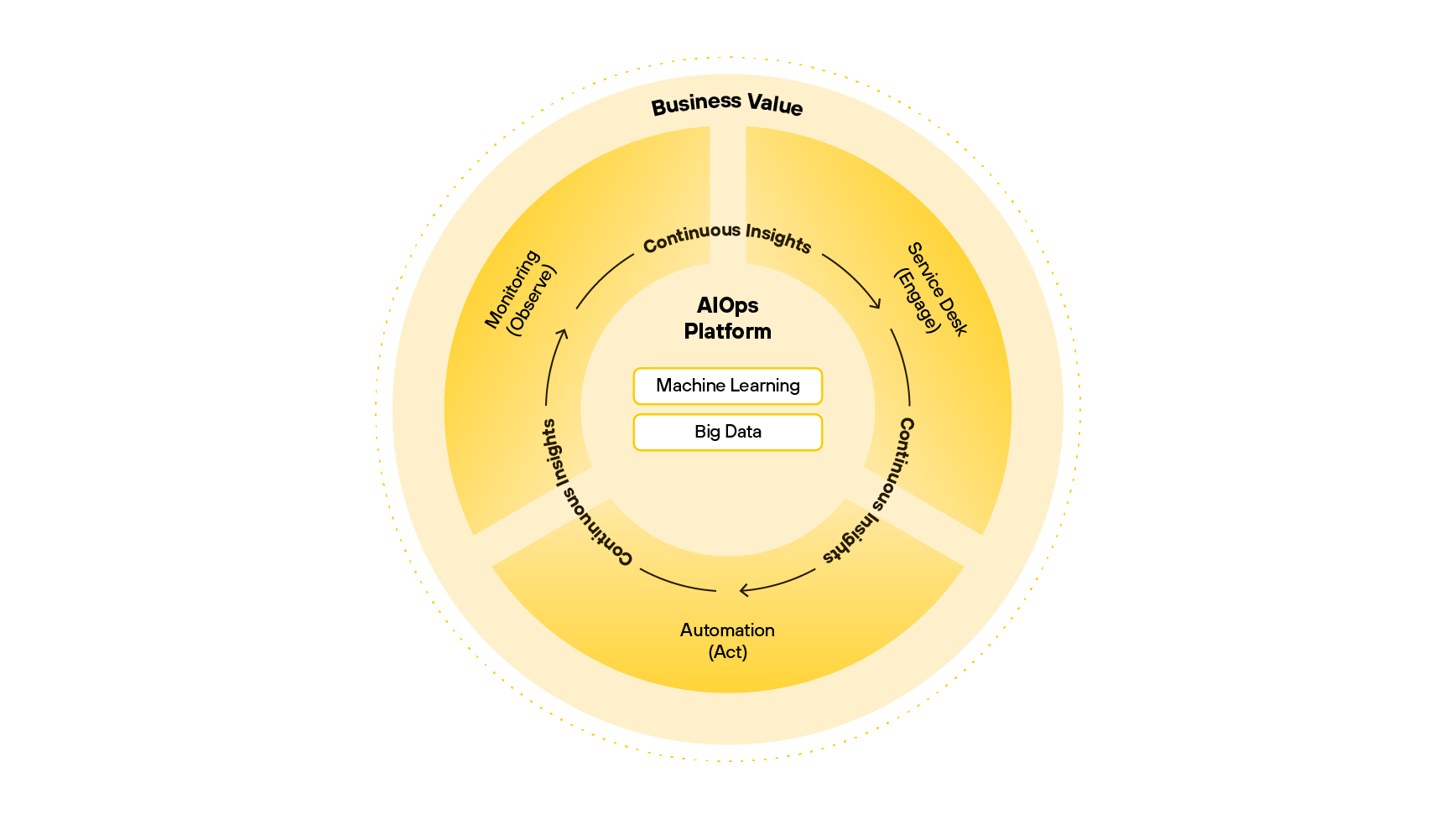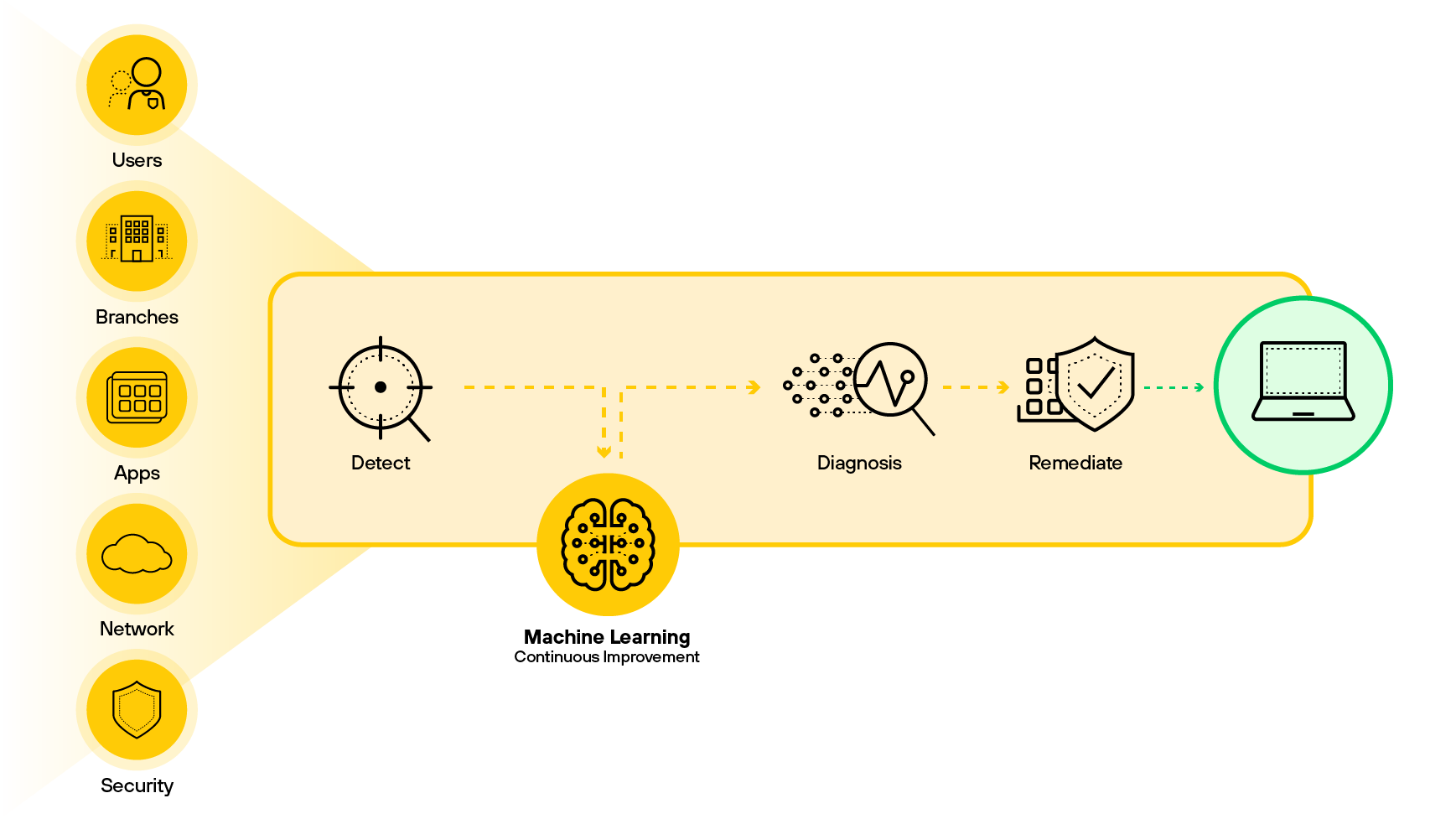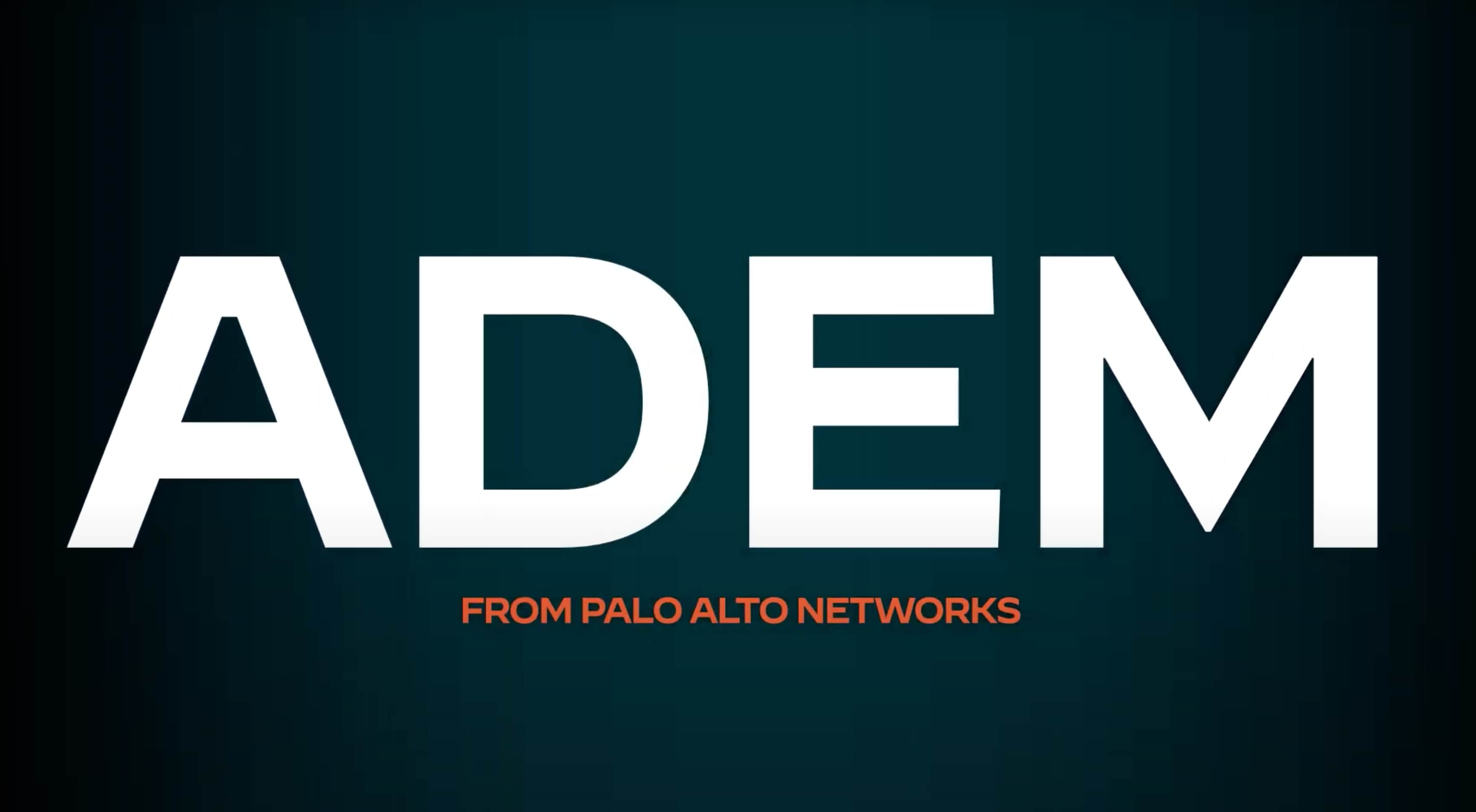-
What Is the Role of AI in Security Automation?
- The Role and Impact of AI in Cybersecurity
- Benefits of AI in Security Automation
- AI-Driven Security Tools and Technologies
- Evolution of Security Automation with Artificial Intelligence
- Challenges and Limitations of AI in Cybersecurity
- The Future of AI in Security Automation
- Artificial Intelligence in Security Automation FAQs
- AIOps Use Cases: How AIOps Helps IT Teams?
-
What is an ML-Powered NGFW?
- What Is Generative AI in Cybersecurity?
What is the role of AIOps in Digital Experience Monitoring (DEM)?
Companies that combine artificial intelligence for IT operations (AIOps) with digital experience monitoring (DEM) gain unique insights into how typical users interact with applications and technology. With the goal of proactively detecting and resolving user experience problems before they impact the business, they use AI to collect data on the user experience and improve their applications, infrastructure, and business processes.
This post explains the role of AIOps solutions in DEM, with representative applications and guidance for future implementations.
What Is AIOps?
To prevent, identify and resolve high-severity outages and other IT operations problems more quickly, businesses are turning to artificial intelligence (AI) for IT operations (AIOps). Coined by Gartner, “AIOps (Artificial Intelligence for IT Operations) combines big data and machine learning to automate IT operations processes, including event correlation, anomaly detection, and causality determination.”
AIOps platforms enable the concurrent use of multiple data sources, data collection methods, and analytical (real-time and deep) technologies. An AIOps framework covers three main steps taken in a continuous cycle: Observe, engage, and act (see Figure 1). The AIOps workflow starts with collecting large amounts of data. Then this data is fed into analytical models for analysis and event correlation to deliver proactive and predictive insights into problems. Finally, AIOps provides recommendations for actions and action automation.

Figure 1: AIOps-platform
Since AIOps is an emergent space, the definition is highly fluid.

Figure 2: Applying the AIOps framework to the incident lifecycle
What Is DEM?
DEM solutions tools collect and monitor data related to all aspects of the digital experience. ItThat covers the end-user experience (and employee experience, for internal applications), including system and application performance. Armed with insights from DEM, IT can take concrete steps (upgrades, optimizations, etc.) with software and hardware that boost the ability of users to work and transact productively.
Gartner defines DEM as being “used to identify technology performance issues and align application performance to support business objectives.” DEM tools harvest firsthand data directly from users with less effort and higher reliability than manual data collection. Instead of depending on superficial, anecdotal descriptions of performance problems, they work at the level of root causes.
Why AIOps in Digital Experience Monitoring (DEM)
IT organizations need to break down tool and data silos with intelligent tools that can accelerate and automate SASE operations. This starts with a native DEM capability in the SASE solution that can collect, correlate, and analyze endpoint, synthetic, and real traffic data.
DEM solutions can leverage recent advancements in artificial intelligence (AI) and machine learning (ML) algorithms to enrich this data with insights that support the IT help desk, NetOps, and NetSec teams. EMA research found that 90% of IT organizations believe applying AIOps technology to network management can improve overall business outcomes. These organizations told us that AIOps could optimize their networks, drive operational efficiency, and improve their user’s overall application experience. DEM boosts AI operations because it provides analysts with deep insights into their applications, infrastructure, and business processes. Reciprocally, AI operations has the potential to improve DEM by automating the time-consuming work of analyzing vast quantities of network and application data generated by user transactions.
That automation is especially advantageous as the employee experience grows in importance in the era of remote work. Real user monitoring of the end-user experience at distant network endpoints enables admins to implement productivity-boosting upgrades and improvements. Using artificial intelligence to mine and analyze deep into network activity and application latency, IT Operations teams can provide comparable digital experiences to both on- and off-premises workers.
Integration of AIOps into DEM Processes
Most AI-powered tools integrate to DEM in three steps. First, they collect tens of thousands of data points per minute from all network endpoints. Data collection spans everything that affects performance and the digital experience, including data from logs, API calls, and performance metrics. Next, they perform automated analysis of signals in the data from the endpoints, looking for specific conditions and levels of urgency known to generate problems in the digital experience. Then, they apply machine learning algorithms to discern patterns in the signals and aggregate them to the level where IT can perform root-cause analysis and take action on them.
Finally, integration with collaboration and automation tools facilitates the dissemination of alerts and updates to IT operations teams, who ensure that future problems are remedied quickly and precisely. The result is an improved user experience, greatly expedited and specifically targeted through the application of artificial intelligence.
Applications of AIOps in DEM
AIOps tools improve DEM in scenarios where IT Operations teams are trying to monitor infrastructure. Through automation and machine learning, they boost efficiency in applications such as these:
Event correlation
Event correlation and analysis is the ability to see through an event storm of multiple related warnings to the underlying cause of events and a determination on how to fix it. Traditional IT tools don’t provide insights into the problem, just a storm of warnings.
Cross-domain analysis and visibility
Domain-based monitoring tools provide insight into issues within their realm but typically are unable to present a holistic view across a digital service. According to Gartner, I&O leaders should use AIOps and DEM to deliver the primary, single pane of analysis across all domains underlying the service.
Proactive anomaly detection
Anomaly detection is a type of machine learning algorithm that detects activity that doesn’t fit normal patterns. Automatically calculate dynamic adaptive baselines with seasonality across all telemetry and logs to find anomalous patterns and notify IT before it becomes a widespread problem impacting end-user experience.
Predictive analytics
Using artificial intelligence, enterprises are finding new ways to manage their cloud infrastructure with the help of predictive analytics. The analytics point them to both actual and likely weak spots in their cloud landscape, allowing them to automate fixes with orchestration or with human intervention. The result is earlier detection of outages and avoidance of downtime.
Root cause analysis
In the traditional scheme, operations teams manually hunt for the cause of problems with a combination of diagnostic tools and brain power. That scheme strains the resources of enterprises with vast networks and thousands of endpoints. AI-powered solutions and automation empower them to precisely identify problems and ensure that they don't reoccur. Even systems that still require occasional human guidance run far more efficiently than purely manual schemes.
Problem resolution
Automating problem resolution is a novel application of AI. But in an environment of never-ending streams of user-related data, it is the only way that IT teams can keep up. Smart enterprises are applying AI operations and machine learning to create autonomous warning systems that notify appropriate teams about current problems and how to solve them. Their goal is to provide administrators all the information they need to solve network problems before users have noticed them.
Implementing AIOps in SASE Environments
When it comes to implementing AIOps within a SASE environment, enterprises look for SASE native solutions that don’t require the added complexity of installing and maintaining additional software or hardware components. The alternative requires multiple siloed tools for end-to-end telemetry in addition to AI/ML engines to detect anomalies.
Benefits of AIOps
One of the main benefits of AI-driven operations is that it enables IT operations to identify, address, and resolve service interruptions and outages faster than ever possible. By cutting through IT noise and correlating siloed data, AIOps is able to detect issues, identify root causes, and provide solutions faster and more accurately than ever before. This enables organizations to improve MTTR and increase productivity . . In a single pane of glass, AIOps platforms normalize and correlate the data from disparate sources, reducing distraction and helping analysts to focus.
Even in an environment of few tools, analysts are still swamped with alerts, made worse by false positives and white noise. An AI-driven tool that continually adapts to accumulated knowledge helps by organizing alerts, sparing precious time and human capacity for higher-value tasks and decision making. It can reduce downtime while setting clear priorities for analysts.
Another big benefit of AIOps is proactive IT management using predictive analytics. As described above, AI tools compile and analyze data to make informed, automated decisions. By the same token, AI is useful in predicting future problems and correcting them before they affect end-user interaction and application performance.
Future of AI-Powered DEM
The emphasis on ensuring a strong user experience has given rise to DEM. Employing experience monitoring tools and methods to improve the delivery of digital services is a discipline unto itself. But there is no way to do that at scale without AI. Hence, AIOps solutions are gaining recognition as an indispensable part of performance management, helping to address the most difficult challenges that accompany digital transformation.
Trends and predictions
TechTarget reports that almost a third of organizations surveyed plan to make significant investments in AIOps tools in the near future.
According to Gartner, “There is no future of IT operations that does not include AIOps. This is due to the rapid growth in data volumes and pace of change that cannot wait on humans to derive insights.” Gartner AIOps Market Guide for AIOps Platforms 2021
Based on IDC research, by 2026, 90% of Global 2000 CIOs will use AIOps solutions to drive automated remediations, including cost and performance metrics, improving resiliency and agility. IDC FutureScape
The vast majority of companies surveyed continue to invest broadly in AI and machine learning, and nearly one-third of those organizations plan to invest in new monitoring and observability tools along with their investments in AIOps solutions.
Those companies indicated that AIOps tools brought greater operational reliability and improved the efficiency and productivity of IT Operations staff.
Potential for growth and development
AI is the logical alternative to labor-intensive, human approaches to detecting and solving network problems, which is why AIOps solutions hold so much appeal. According to Gartner, 4 out of 10 SD-WAN-powered enterprises will depend on AI for their Day 2 SD-WAN operations by the middle of the decade.
Another feature of AI solutions is their ability to predict network problems before the user experience is affected. Infrastructure and operations (I&O) leaders value that feature, with 6 out of 10 of them indicating they'll be turning to DEM by 2026. Their priorities are application performance monitoring and measuring the performance of endpoints and services.
Impact on the industry
From the broad perspective of the IT industry, the combination of AIOps and DEM enables IT teams to deal with large discrete datasets in a meaningful way and empowers them to exceed their end-user experience expectations. IT Operations teams understand that more manual tools and resources will not give them the business outcomes they want. Their best chance of reducing and even preventing downtime will come from versatile AIOps platforms designed to provide insights, automation, and ease of use.
